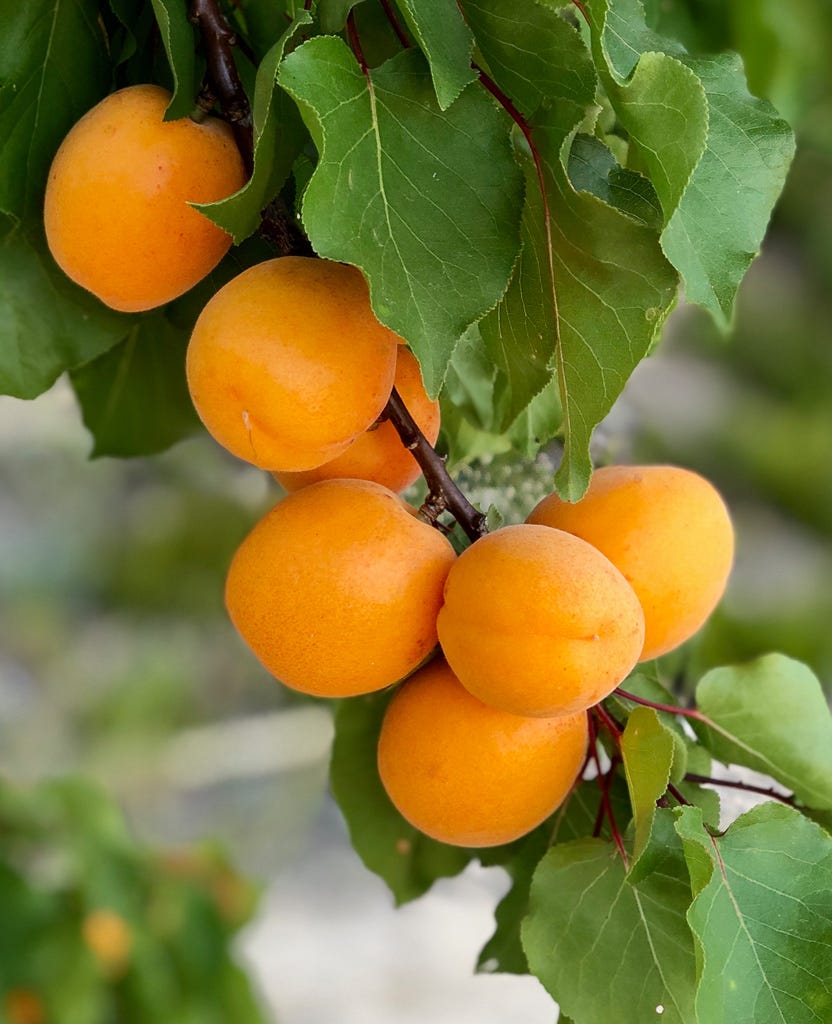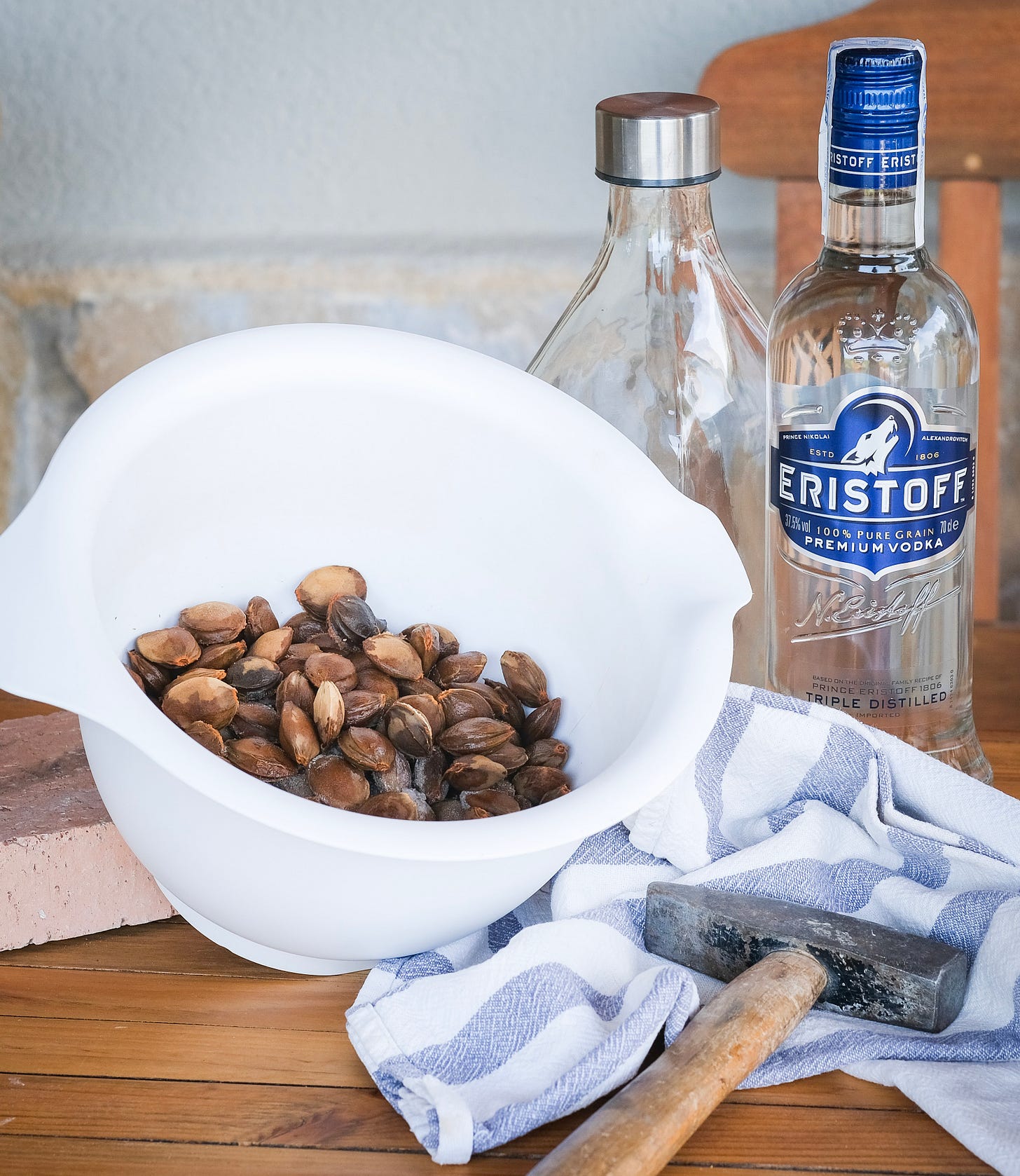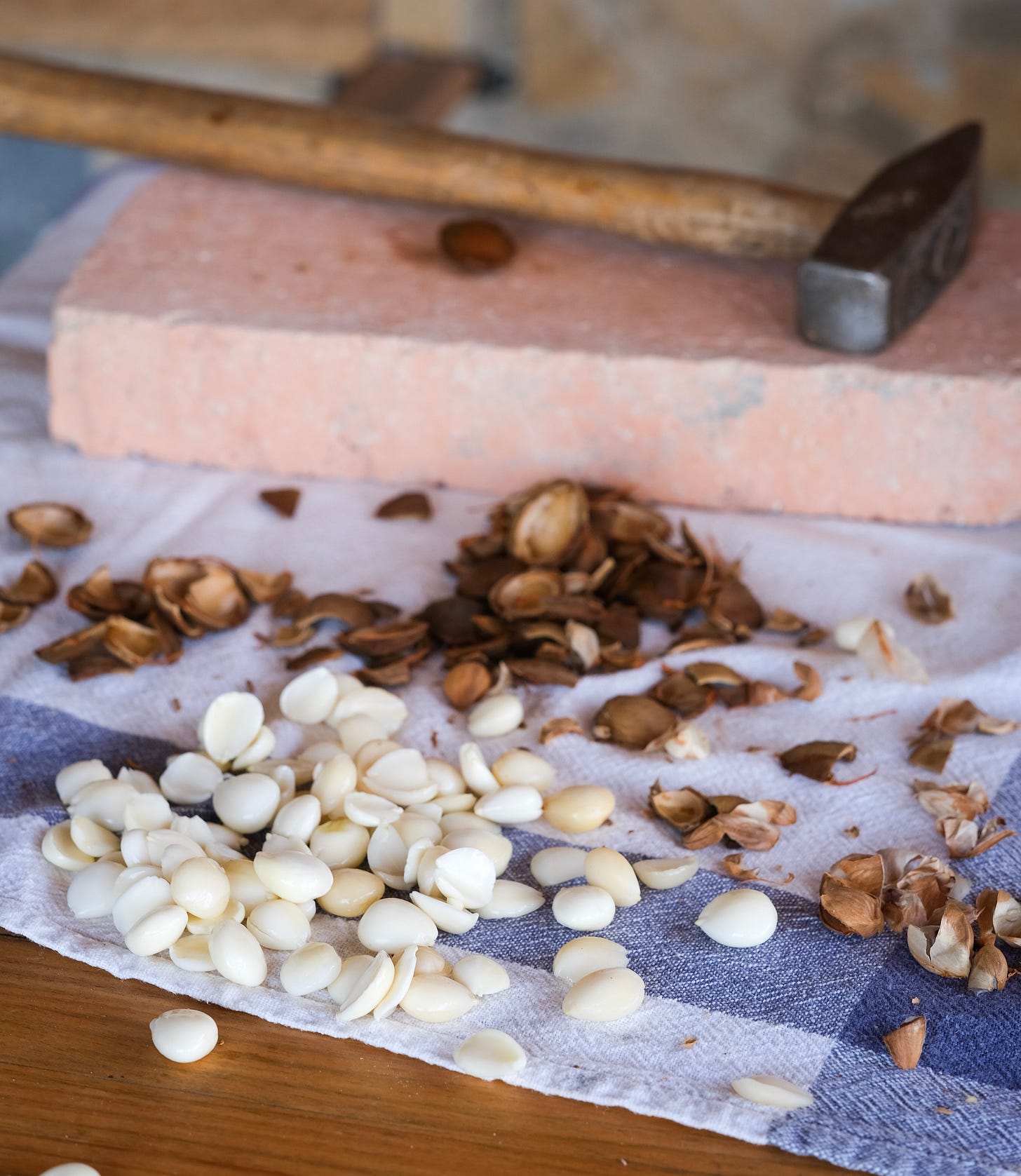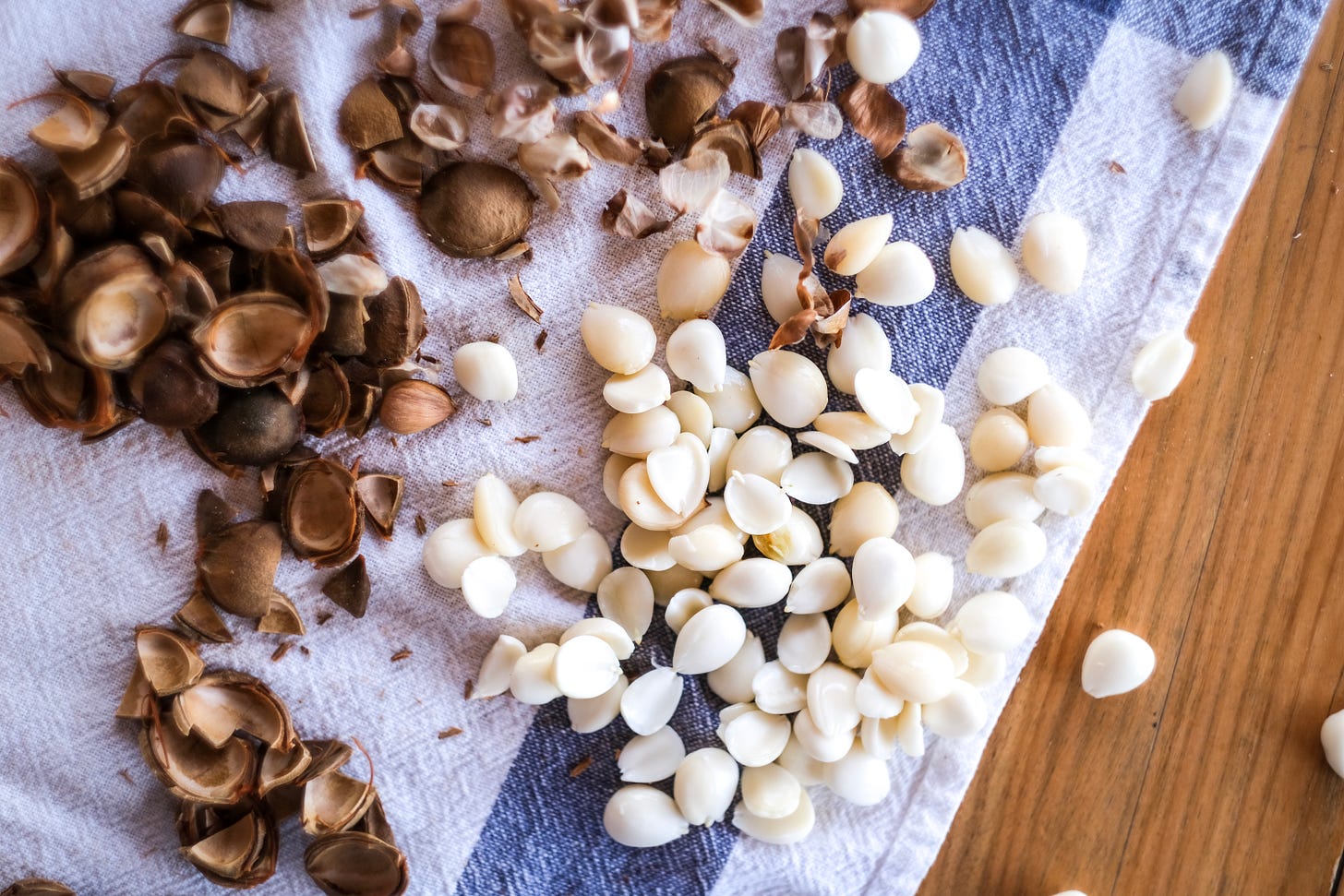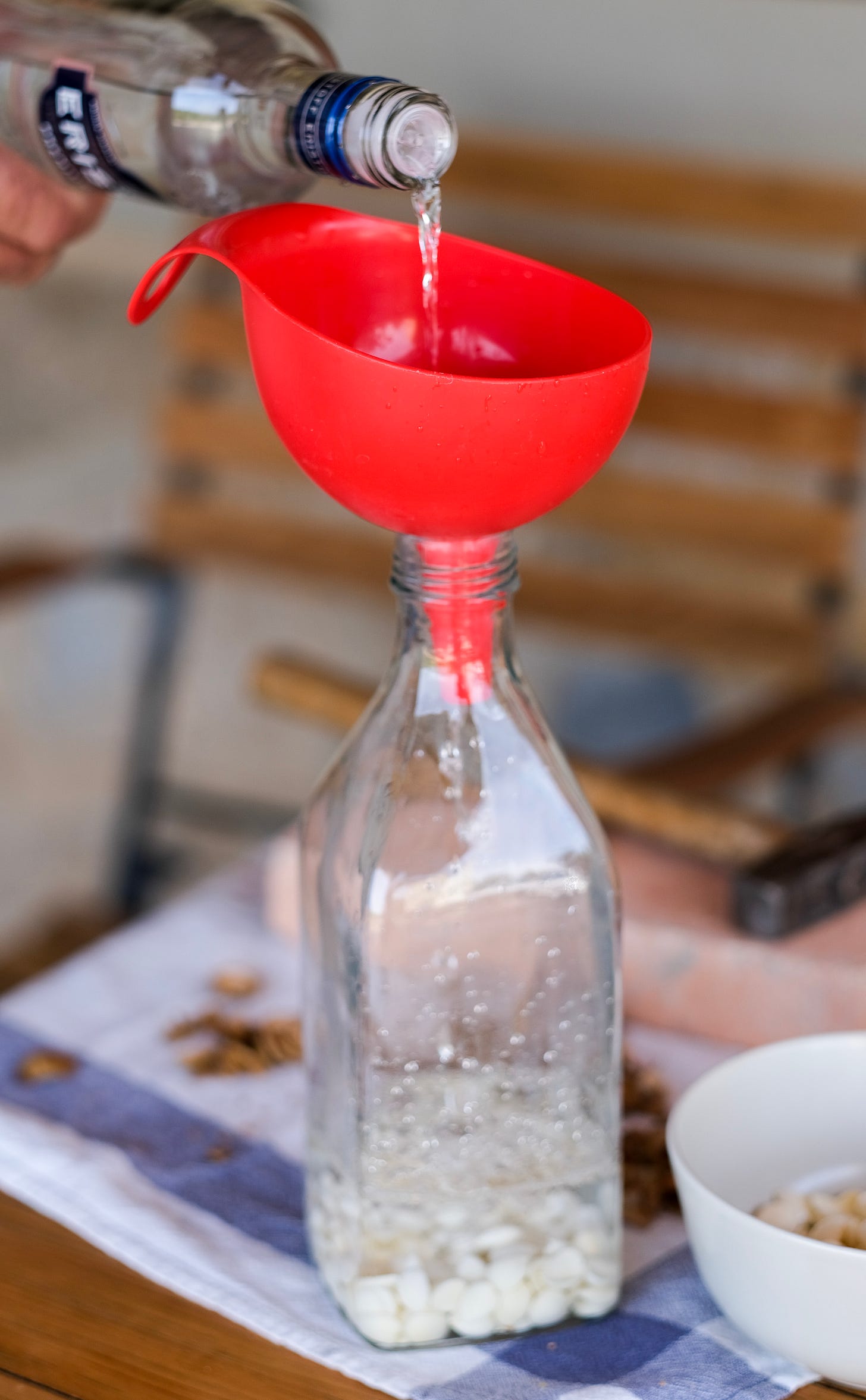From Apricots to Almond Extract
My orchard produced an overabundance of apricots this year and I discovered a new byproduct of all those heretofore useless pits: make some kick-ass almond extract. That's right. Not a typo. Almond extract from apricots.
This discovery all came about because I was in a bit of a funk about the short life span of all those apricots in my garden. Within three days, it was all over. From the first plop of overripe fruit hitting the ground to the last tender globe I plucked from the tree and mounded up in the basket.
At that point, it was on to the business of stretching out the lifeline of the delicate aroma and intense flavor by capturing it in a jar and hoping there would be enough to last until the next year’s harvest.
Normally, that means a jam jar and to be sure, there will be plenty of that to come. But this year, I discovered another way to preserve the heady aroma of a secret stored deep in the pit of the apricot. I made what amounted to the best almond extract I could ever imagine.
But before I get into the super simple process of creating an intoxicating addition to your cupboard, there needs to be an equally simple word of WARNING.
Apricot kernels, also known as noyaux, are the nuts buried deep in the hard shells of an apricot stone pit. Like other foods including cherries, apples, peaches, raw almonds, macadamias and beans, these seeds contain amygdalin or laetrile, a vitamin that can break down in the body and convert to the plant poison known as cyanide. Following an extensive online search, I concluded that the risk of poisoning was pretty much infinitesimal, but that’s just my take.
I have a full list of resources at the end of this piece that provides more detail and it’s important to read these notes to fully understand the possible health risks and reach your own conclusion before you decide to make this or any other extract from seed.
Now, let’s get back to the very simple process of extracting almond extract from apricots. I began by assembling a few everyday tools: hammer, kitchen towels and a glass jar or bottle to two, as well as some reasonable quality vodka.
Armed with a couple of towels to soften the blow, I struck the side of the shell with a small hammer and most snapped in half with ease. revealing a little kernel and releasing a sweet aroma that was a crazy combination of floral and fruity notes. Almond, vanilla, honeysuckle, apricot, and a hint of citrus tang.
Next, I gently rubbed the kernel to remove the paper-thin sheath that protects the meat. You don’t have to take this step if you don’t want to and the extract will take on a deeper brown color if you don’t, but I imagined the result would be a cleaner tasting extract in the end.
As the aroma wafted from the growing pile on the table, so did my excitement. While I know I’m not the first person to try this technique, I was still pretty giddy about it.
Once I had extricated all the little nuts from their protective shells, I dropped them into a clean glass bottle ready for the final ingredient - vodka. You can use rum, brandy, gin - whatever suits your fancy. Next year, I might explore what transpires when you marry the nuts with a few different spirits, but for starters, I opted to keep the flavor as pure as possible and went with neutral vodka.
The ratio of nuts to alcohol is about 60 nuts to 4 cups of vodka. If you haven’t amassed that many nuts, you can always freeze the unshelled pits until you have enough to put together a small quantity.
With a well-tightened lid in place, I secreted it away in a cool dark cupboard. Three months from now, I’ll be tasting and testing and figuring out what else to do with it besides bottling it for holiday presents and judiciously using it in all sorts of holiday baked goods.
NOTES
There are many website sources of information about amygdalin, apricot seeds and the extract that can come from those nuts. My favorite is a piece from Samin Nosrat, popular author of Salt, Fat, Acid, Heat who reports that if you have any concerns, you can roast the noyaux at 325°F or 165°C for ten to fifteen minutes thereby destroying the enzyme that contains the cyanide, a technique she learned while employed at Alice Waters’ famed Chez Panisse restaurant in Berkeley California. http://ciaosamin.com/ciao/almond-extract
While many of the online sources are about eating the nuts directly (which I don’t plan to do), the following sources are worth reviewing:
https://nourishedkitchen.com/noyaux-almond-extract/
https://www.smartkitchen.com/resources/apricot-kernels
https://www.davidlebovitz.com/is-it-safe-to-eat-apricot-pits-o/
http://www.sewhistorically.com/homemade-almond-extract-with-almonds-or-apricot-pits/



